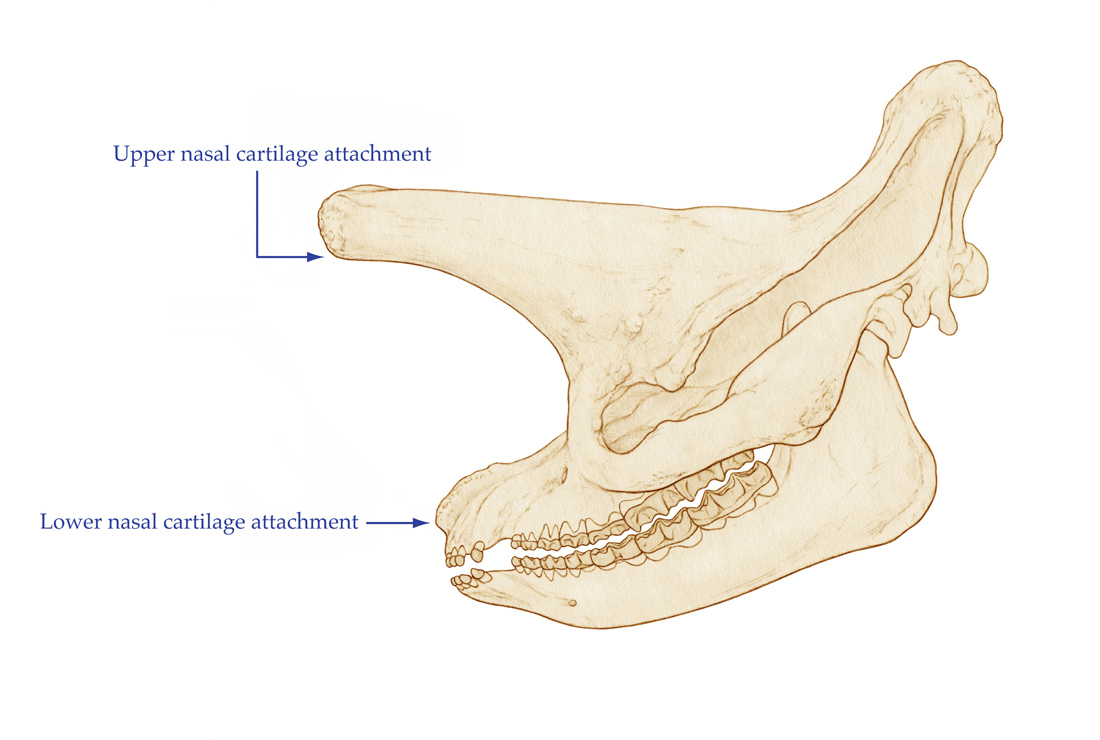One of the challenges for paleontologists is reconstructing the appearance of animals that are long extinct. Working with artists is an integral part of paleontology. Artists who work in paleontology are usually scientific illustrators, a profession that employs creativity and drawing skill within the strict rules of scientific research. Paleontological illustrators often work closely with scientific research staff on particular projects. They need an excellent grasp of anatomy as well as drawing and photographic techniques.
As part of the Perissodactyl project, I worked with two AMNH research associates, Dr. Matthew Mihlbachler and Dr. Nikos Solounias of the New York College of Osteopathic Medicine on a new reconstruction of the Central Asian brontothere Embolotherium. Mihlbachler and Solounias had carried out a research project on this animal; their results suggested that the structure previously interpreted as a horn in Embolotherium actually supported a greatly enlarged nose. My task was to produce an accurate reconstruction of this bizarre looking mammal.

The massive fossil skulls of E. grangeri and E. andrewsi, two species of Embolotherium in the AMNH collections.

Because the actual fossil skulls of E. andrewsi and E. grangeri are distorted and incomplete, I found it helpful to sculpt small preliminary models (maquettes) at 1/5th size. Epoxy clay and paper

Muscles and other soft tissues are added to the skull model. Because many physical characteristics are not preserved, it's necessary to look at modern living relatives for reference. Embolotherium's closest living relatives are rhinos, horses, and tapirs, which informed many of my decisions about what these animals may have looked like. Epoxy clay, paper, pencil erasers as tissue depth markers

Fleshed out maquette of E. andrewsi. Epoxy clay

Reconstruction of E. grangeri's skull. Pencil and digital

Reconstructed skull illustration of E. grangeri, with flesh contour... and believe it or not, this is a scientifically "conservative" hypothesis! Pencil and digital

Reconstruction of E. andrewsi's skull. Pencil and digital

Reconstructed skull illustration of E. andrewsi, with flesh contour. Pencil and digital

Reconstruction of Embolotherium's articulated forelimb, based on fragmentary fossils. Pencil and digital

Full body reconstructions of E. andrewsi and E. grangeri, to scale with Dr. Henry Fairfield Osborn, the most prominent paleontologist of his day. Osborn wrote the first comprehensive manuscript on brontotheres in 1929. Pencil

Another, slightly shaggier, interpretation of E. andrewsi. Pencil and digital


